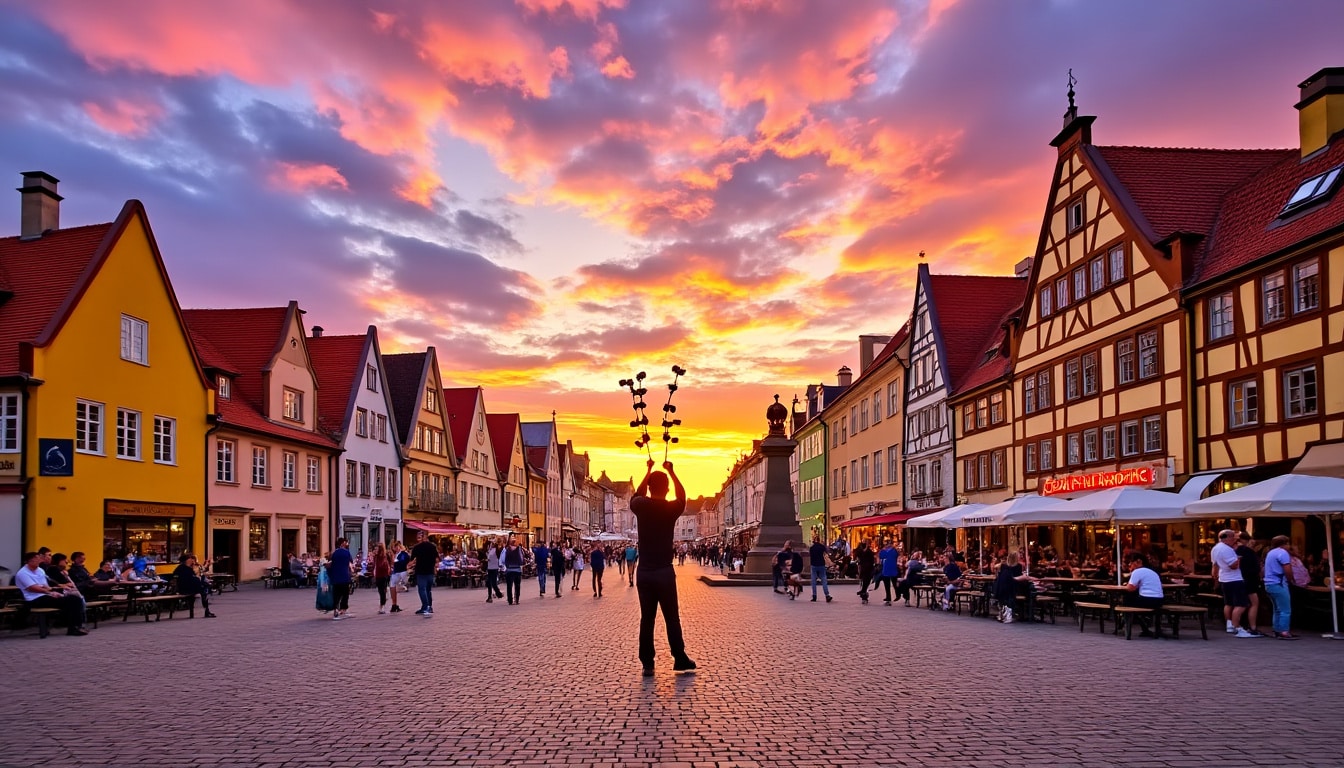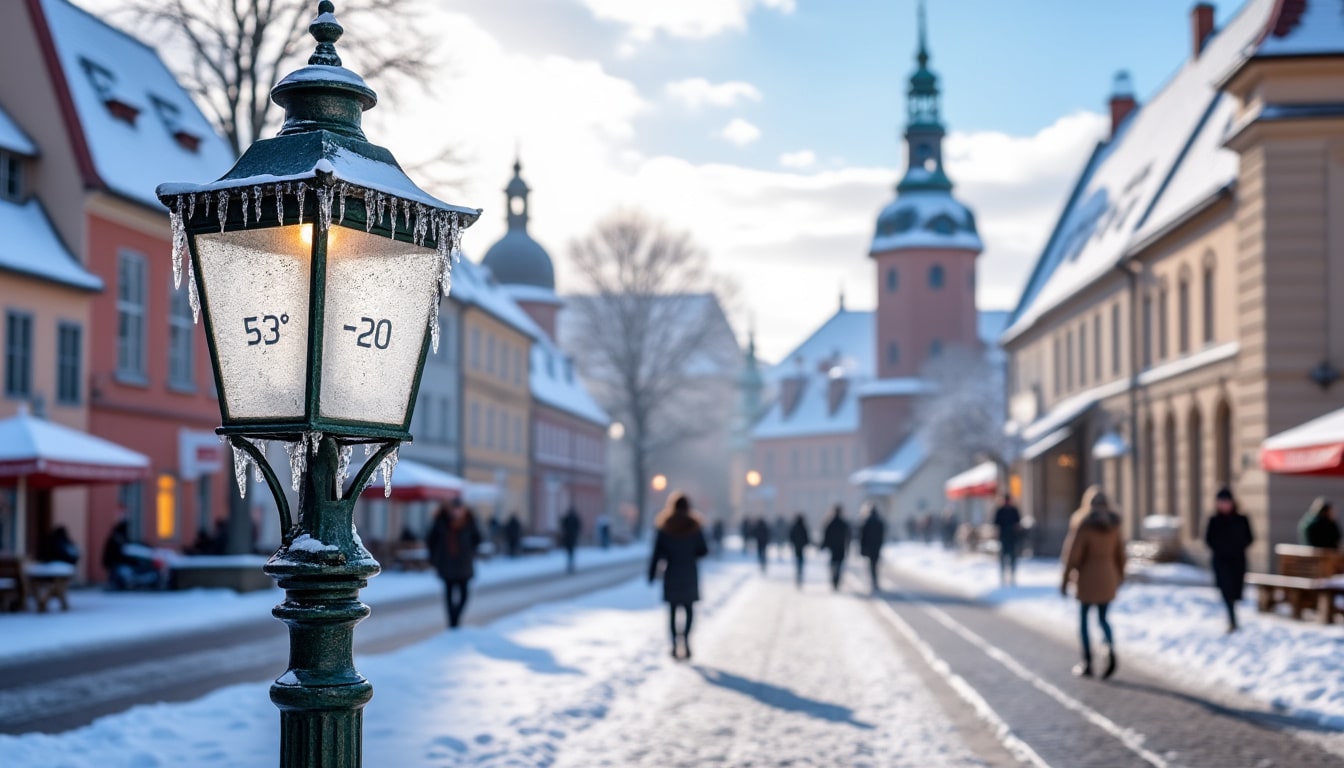Tallinn, the capital of Estonia, is a city of diverse climates and allure, each season painting the urban landscape with its distinct charm. Situated on the Baltic Sea, this city experiences a year-round dance between warm summers and stern winters. For those eyeing a visit, understanding Tallinn’s temperature fluctuations is key, as it informs everything from packing decisions to sightseeing plans. This overview dives into what you can expect from Tallinn’s weather, ensuring your trip or stay is as comfortable as possible.
Tallinn’s Year-Round Temperature Overview
Nestled in Northern Europe, Tallinn enjoys a climate categorized as Dfb – a humid continental climate with distinct seasonal variations. This means that the city doesn’t have a true dry season, and tourists can experience everything from the serene snowfall of winter to the sun-drenched days of summer.
The average annual temperature in Tallinn is around 6.5°C (43.7°F), with some significant fluctuations throughout the year. In the chilly embrace of January, the coldest month, temperatures can dip to an average low of -7°C (19.4°F) during the night, offering an icy backdrop perfect for winter sports enthusiasts.
Conversely, July heralds the onset of the warmest conditions, with daytime highs reaching approximately 21°C (69.8°F), ideal for those who love sunlit walks or exploring Tallinn’s medieval charms. Rainfall is evenly distributed throughout the year, further enhancing the lush green scenery and ensuring the city’s air remains crisp and revitalizing.
Visitors should also be prepared for the contrasting daylight hours. In winter, Tallinn sees shorter days with limited sunlight, whereas summer days stretch delightfully long, allowing for extended explorations under the sun. To check seasonal weather updates in Tallinn, visit Tallinn Climate & Weather Details.

Temperature Extremes: Winter Chill and Summer Warmth
Winter in Tallinn is not for the faint-hearted! From late November to early March, this city wraps itself in a snowy cloak, as temperatures often make a hasty retreat below the freezing mark. February marks the zenith of winter’s furor, with the city frequently experiencing lows of -7°C. It’s during these months of chilly temperatures that locals and visitors alike indulge in the traditional Estonian sauna experience, a practice that’s deeply rooted in the culture and offers a cozy retreat from the biting cold.
Yet, as sure as the winter snowflakes fall, July comes with its warm embrace, pulling temperatures to the lower twenties. Summer is when Tallinn shines brightest, with daylight hours long enough to witness both sunrise and sunset in one seamless day. This is the time when the cobblestone streets of Old Town become bustling with street performers, markets, and local festivals. Travelers seeking to bask in the city’s summer reverie should allocate a slot between June and August—known for its benign and agreeable weather.
Monthly Averages and Seasonal Considerations
| Month | Avg High (°C) | Avg Low (°C) | Rainfall (mm) | Daylight Hours |
|---|---|---|---|---|
| January | -1°C | -6°C | 50mm | 6.3h |
| April | 9°C | 2°C | 40mm | 14.3h |
| July | 21°C | 14°C | 56mm | 18.5h |
| October | 9°C | 4°C | 70mm | 10h |
These statistics reveal how Tallinn’s climate can reshape your travel plans. Whether you’re an enthusiastic snow lover or a sun worshipper, understanding these average temperatures can guide your choice of activities and attire when visiting.
Seasonal Travel Tips for Tallinn Visitors
Traveling to Tallinn calls for thoughtful consideration of its seasonal shifts. Each season brings unique characteristics, influencing what visitors should pack and plan during their stay. Here’s a detailed seasonal breakdown to make the most out of your visit:
- 🥶 Winter (December-February): With temperatures falling to -7°C, adequate winter clothing is essential. Pack layers of thermal wear, gloves, and a good pair of boots to navigate the snowy streets. There’s always the delightful magic of Christmas markets to look forward to, even in the biting cold.
- 🌷 Spring (March-May): The city starts to thaw in March. By May, blossoms are budding. Light sweaters, a waterproof jacket, and scarfs can help you navigate the occasional chill. This season is also perfect to sample local cuisine, with numerous eateries offering seasonal delights.
- 🌞 Summer (June-August): This is the high season, where Tallinn shows off its sunny best. Prepare for warm days by packing lighter clothing, including T-shirts and shorts. Don’t forget sunscreen to protect against prolonged sun exposure while walking through lush parks or enjoying outdoor events.
- 🍁 Autumn (September-November): As summer fades, the crisp air of autumn fills Tallinn’s atmosphere. A mix of medium-weight clothing is suggested, considering the temperature dips, especially into the cool November air. Autumn is an ideal time for cultural tours and warm cafes offering Estonian comfort food.
For detailed recommendations on what to bring and how to dress, you might find the Tallinn Clothing Guide helpful in ensuring you’re well-prepared for each season’s quirks.
Beyond Temperature: Understanding Tallinn’s Weather Elements
While temperature is a vital aspect of Tallinn’s climate, it’s essential to look beyond it to gauge the city’s full meteorological profile.
The city experiences significant seasonal variations in cloud cover, humidity, and precipitation that contribute to its distinctive weather identity. Starting with cloud cover, winter months are typically overcast, with January being the cloudiest. July, however, provides a brighter outlook as Tallinn experiences clearer skies for most part of the month.
Humidity remains fairly stable year-round, but it’s particularly high during the winter, contributing to the capital’s frosty feel. This consistency means that those staying for an extended period must be prepared for dampness along with the cold. For monthly updates on humidity levels, check out Tallinn Humidity Report.
Precipitation, mainly in the form of rain, peaks in late autumn. Expect wet conditions during October, the wettest month, which can impact outdoor plans. But don’t be overly concerned; rain oftens arrives as light showers or brief emotional outbursts, leaving behind a city shimmering under the wash of rain.
Daylight, Twilight, and Night: Sunlight Hours in Tallinn
Sunlight in Tallinn is a spectacle in its own right. The city’s latitude ensures that daylight hours vary dramatically through the year. During winter, short days can feel like dusk follows shortly after dawn, with only around 6 hours of daylight in December. In contrast, summer solstice around June offers nearly 19 hours of daylight, lending itself to the unique phenomenon of “White Nights.” These extended daylight hours make summer perfect for nocturnal strolls and watching sunrises that blend into sunsets.
To discover more about how to utilize these daylight variations in Tallinn, visit Seasonal Guide to Tallinn.
How Tallinn’s Climate Influences Tourism
The dynamic range in temperature and daylight has a direct impact on tourism in Tallinn. Visitors can curate experiences shaped by these natural patterns—choosing between aesthetic winter landscapes or lively summer festivals.
Winter Activities: The colder weather naturally steers tourists towards indoor attractions. Tallinn’s museums, rich with history, cater to those avoiding the frigid air. Visitors can explore medieval architecture encased in frost or savor traditional Estonian meals by a fireplace, an experience not to be missed.
Summer Invitations: Aligning with tourism peaks, the agreeable temperatures of summer attract many outdoor events. From music festivals to charming docks lining up food markets, the coastal charm of Tallinn is at its full display. Sea excursions and castle tours offer both physical activity and visual pleasure under comforting sunshine.
The mix of cultural progression and stunning nature make Tallinn a vibrant destination in any season. To optimize your travel, check out the Tallinn Travel Checklist for expert tips.
FAQ: Your Questions Answered
- Q: What is the best time to visit Tallinn?
A: The most favorable time is from late June to mid-August, when the weather is warm and outdoor activities are plentiful. - Q: Does Tallinn experience a lot of snow?
A: Yes, particularly in January with an average of 14 snowfall days, offering a classic winter wonderland. - Q: What should I pack for a winter trip to Tallinn?
A: Essential items include thermal clothing, a sturdy winter coat, woollen gloves, a hat, and waterproof footwear. - Q: How does Tallinn’s latitude affect daylight hours?
A: Due to its northern location, Tallinn experiences long daylight hours in summer and short days in winter.
The intricacies of Tallinn’s climate underpin its charm and add layers to any visit. By understanding these components—temperature, sunlight, and seasonal shifts—you can tailor your travel experience to align with the city’s natural magic. Whether you’re wandering through historic streets dusted with snow or reveling in the extended warmth of Baltic summers, Tallinn acts as a canvas on which you can paint your adventures.

